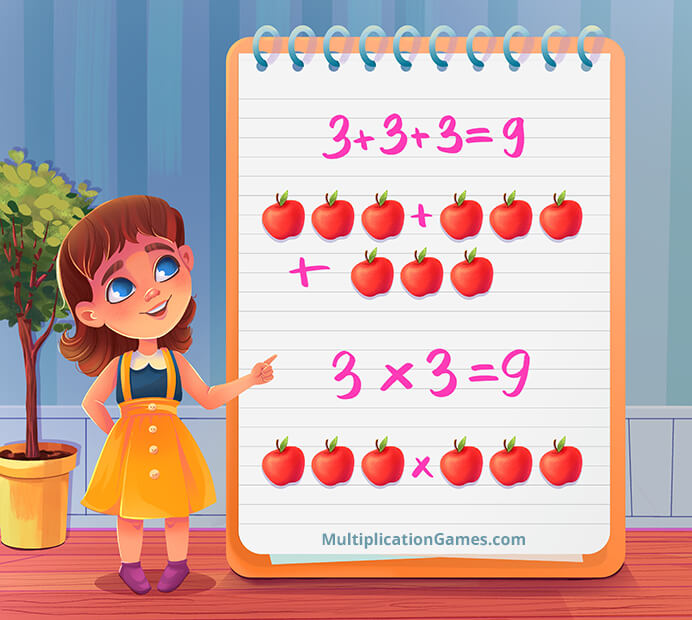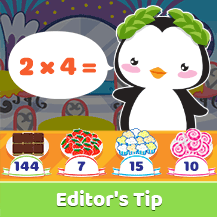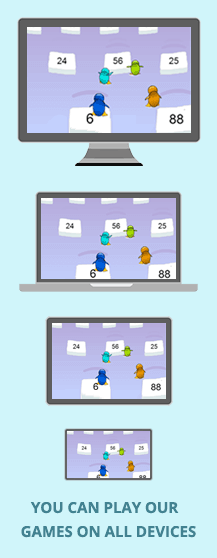9 Easy Steps to Teach Kids Multiplication
By Megan - 12/05/2022
Once your child masters the basics of addition and subtraction, it’s time for them to move on to multiplication. Since multiplication requires students to learn their tables, it can be a complex technique for many kids to grasp. It’s important to teach your children about the basics of multiplication so that they learn how to solve problems instead of just memorizing solutions.
In this article, we will cover 9 easy steps to teach kids multiplication. Keep reading to learn everything you need to know to assist your primary school class or children at home.
1. Don’t encourage memorization
Since multiplication is essentially repeated addition, it’s more important to discuss the relationship between multiplication and addition as a foundational skill. Many kids get intimidated by having to memorize their tables.
However, they don’t understand the proper methodology of multiplication. This means that they may struggle to solve problems with new numbers or recall information that wasn’t in their study guide.

If your child is struggling, give them examples of how the multiplication process mimics addition. For example, 3 x 3 is the same thing as 3 + 3 + 3. These tactics can help them feel more confident in their ability to learn multiplication and answer questions on the spot instead of simply memorizing answers.
2. Explain how zero works in multiplication equations
Multiplication and addition differ when it comes to zero, so you’ll want to make sure you explain how zero operates in multiplication questions. An excellent way to show the difference is n + 0 = n; however, n x 0 = 0. Anything multiplied by zero is also zero; however, any number added by zero is the original number. In each case, the answer to the equation is present within the equation itself.
3. Identify the property of one
Like zero, the number one is easy to multiply since it always retains its value. When you are trying to help your child learn mathematics, start with the basics by identifying zero and the property of one. These simple rules will allow them to comprehend more difficult equations with ease.
4. Start with simple numbers
If your child is struggling with multiplication, start with easy numbers that they are able to recall quickly. The most important thing is to help them get into a flow state with multiplication. The tables for 10 and 11 are sometimes some of the easiest for kids to learn, which makes them a great place to start.
5. Demonstrate commutative property
Similar to addition, multiplication is also commutative. Despite the order of numbers in an equation, the answer will always be the same. Understanding this can help kids identify the difference between multiplication and addition vs. subtraction and division. For example, 3 x 4 and 4 x 3 will both equal 12.
6. Show the relationship between tables
All multiplication tables are interconnected with one another. For example, when a kid is learning their 9’s, they will realize 8 x 9 is already something they understand from learning their 8’s. The laws of multiplication continuously build upon each other.
Gradually, as they work through more complex tables, they will already have an understanding of what they learned previously. Building these recognizable relationships can help expedite the learning process while ensuring your child doesn’t get too overwhelmed.
7. Explain the logic behind multiplication
Instead of focusing on memorization alone, teach children the laws of multiplication and how they can apply them to their everyday lives. The more that you demystify the purpose of multiplication, the easier it will be for them to grasp the challenging concepts.
8. Teach kids how to break down large numbers
Large numbers can be hard to conquer for some kids, so teach them how to break down numbers into smaller numbers. For example, instead of 8 x 12, they can do 8 x (6 + 6). Explain the logic behind this system and see if it helps your children work out different equations in a faster, more cohesive way.
9. Implement visuals into study sessions
Research proves that kids learn better through visuals, so consider getting at-home visual aids that allow kids to learn multiplication hands-on. An affordable way to implement visuals is with animated math games, such as our free multiplication games.
Games make it simple for kids to learn multiplication in a new environment. Since they are incentivized to win the game, they are more likely to challenge themselves with more complex problems and new equations that may have otherwise intimidated them.
Is Your Child Struggling to Learn Multiplication?
These nine tips can be a great tool to help advance your child’s understanding of multiplication. Whether you are a teacher or a parent, it can be challenging to teach children new math skills, especially if they generally struggle with numbers.
Remember that it’s important always to find a way to make math fun and enjoyable while reminding them why it’s so essential to learn these skills.
The more you can gather items and hands-on learning materials, the easier it will be for your child. This can be as simple as using food or treats as a tool to demonstrate multiplication. Many children let their fear of failure discourage them from exploring and practicing new techniques.
Try to maintain an uplifting spirit around math so that kids don’t get down on themselves if they get something wrong. Instead, they should know that math is a complex subject that will help them navigate the real-world with lasting skills and tools.






